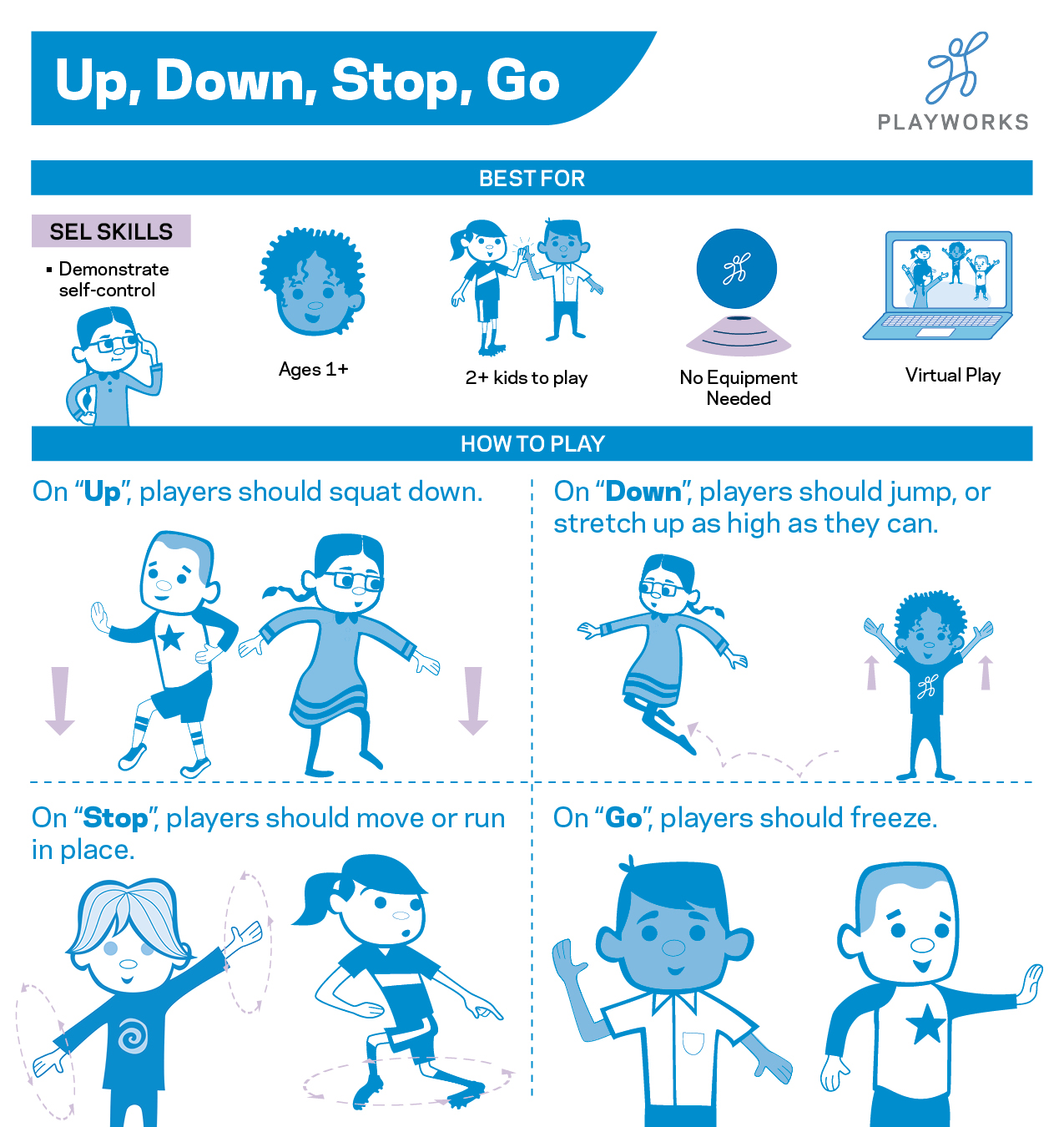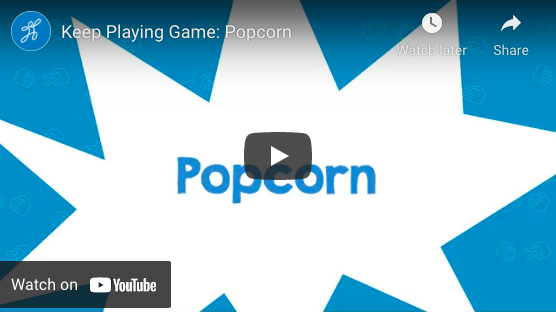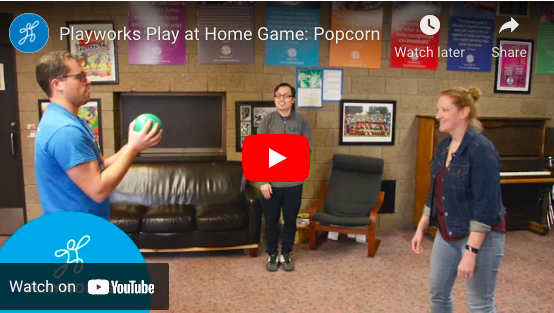Keep Playing FY22 Template
Game of the Week: Popcorn
This week Playworks is featuring a group challenge that’s all about helping individuals believe in themselves. The best part is, this game can also be played by an individual.
Social-Emotional Focus:
Self Confidence – Feeling good, being proud of the things you can do, and believing in yourself, even when you don’t do well at first.
Play Virtually
Play In-Person with Physical Distance
Simplified Game Instructions
# of people to play: 1+
Best for ages: 5+
Setup/Teaching Time: 1-2 minutes
Equipment needed: A ball, or a small, tossable object (rolled up socks work well!)
Goal: To toss the ball in the air and clap as many times as possible before catching it again.
How to Play:
- One person starts the game by throwing the ball in the air, clapping one time, and then catching the ball.
- Once you’ve tried it one time, pass the ball to the person next to you in the circle so they can try. Continue this all the way around the circle, giving everyone a turn.
- If you drop the ball or don’t clap the correct number of times, you were unsuccessful and that’s okay.
- When it gets back to the first person, check-in with everyone. If you successfully clapped and caught the ball, move up to Level Two. If you were unsuccessful, stay on Level One.
- Level Two means that you’ll try to clap two times before catching the ball. Level Three means three claps, Level Four means four claps, and so on.
- Each time the ball comes to you, try the level you are on. If you’re unsuccessful, stay on the same level and try again next time..
- If you’re playing on your own, just work your way up and see how many claps you can get to!
SEL Game Debrief
What did you do to “shake it off” when you made a mistake and didn’t catch the ball?
Game Modifications
Age Group Modifications
- Younger students: use a lighter object, like a scarf, plastic bag, or balloon to give students more time to clap before they need to catch.
- Older students: Add additional challenges to the game such as other actions to perform before catching the object, reaching a target number of claps in a set amount of time, or while racing against others.
Academic Applications
- Name items in a category for the number of claps the person ahead of you attained. Ex. If someone claps five times the next person has to name five mammals.
- Practice counting in a different language.
Challenge Ideas/Other Modification
Add increased challenges and change the game a little each time you play. For example, try playing a round with eyes closed or using one hand. Debrief with kids about how these additional obstacles made them feel, and encourage them to invent their own challenge round ideas.

Brain Break: Up, Down, Stop, Go
Goal: Quickly follow the opposite of the leader’s directions.
How to Play
- The leader calls out the commands “up”, “down”, “stop”, or “go” one at a time, and players perform the opposite action.
- “Up” – Players squat down
- “Down” – Players jump, or stretch up as high as possible
- “Stop” – Players move around the play area in a specific movement (walking, jogging, running, hopping, etc.)
- “Go” – Players freeze
- When players make a mistake they complete a task (ex: 5 jumping jacks) before returning to the game.
- Start with a practice round so that all players understand the commands and the movements that go with them, and know what to do if they make a mistake.
Additional Resources
School Community Announcements
This week, our focus will be on self-confidence. Self-confidence means to feel good about yourself, and be proud of the things you can do. People with self-confidence believe in themselves, even when they don’t do well at first.
Here are some great ways to practice your self-confidence at school:
- Talking to yourself in a positive way is a great way to practice self-confidence in the classroom. The next time you have a challenging test or project, tell yourself, “I’ve got this!”
- When playing with classmates and friends, you can build self-confidence by practicing to get better at something that might be hard for you at first, like tying your shoes or riding a bike.
- Our game of the week this week is Popcorn try it on with your class during a morning meeting, and then challenge yourself to keep playing and beat your high score.
Play at Home
Our Play at Home Playbook includes games that can be enjoyed anywhere, with little to no equipment. Available in the top 7 languages spoken by English Language Learner (ELL) students, according to NCES data.
Asynchronous Recess
Playworks Coaches lead fun and interactive warm-ups, games, and cool-down exercises. Playworks has 150+ videos to get kids moving.
Return to the Keep Playing Homepage for archives of past weeks and other helpful resources.

